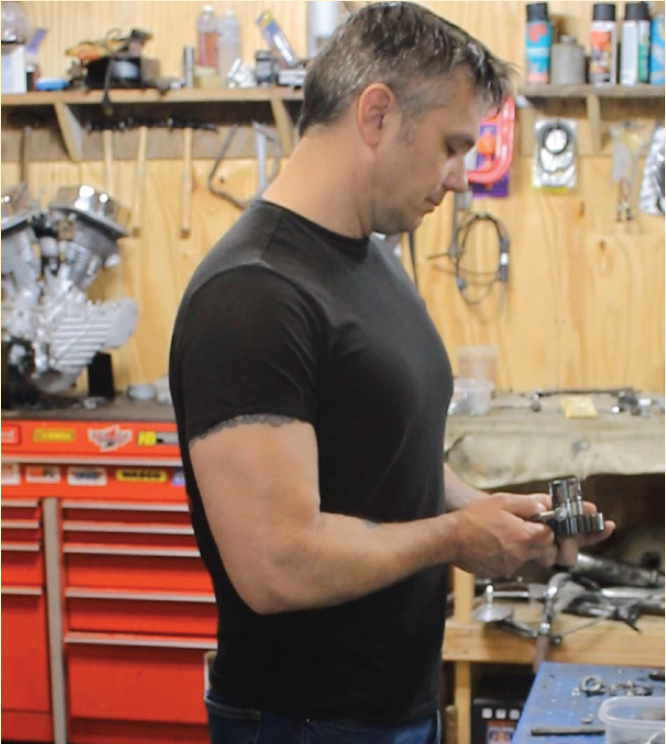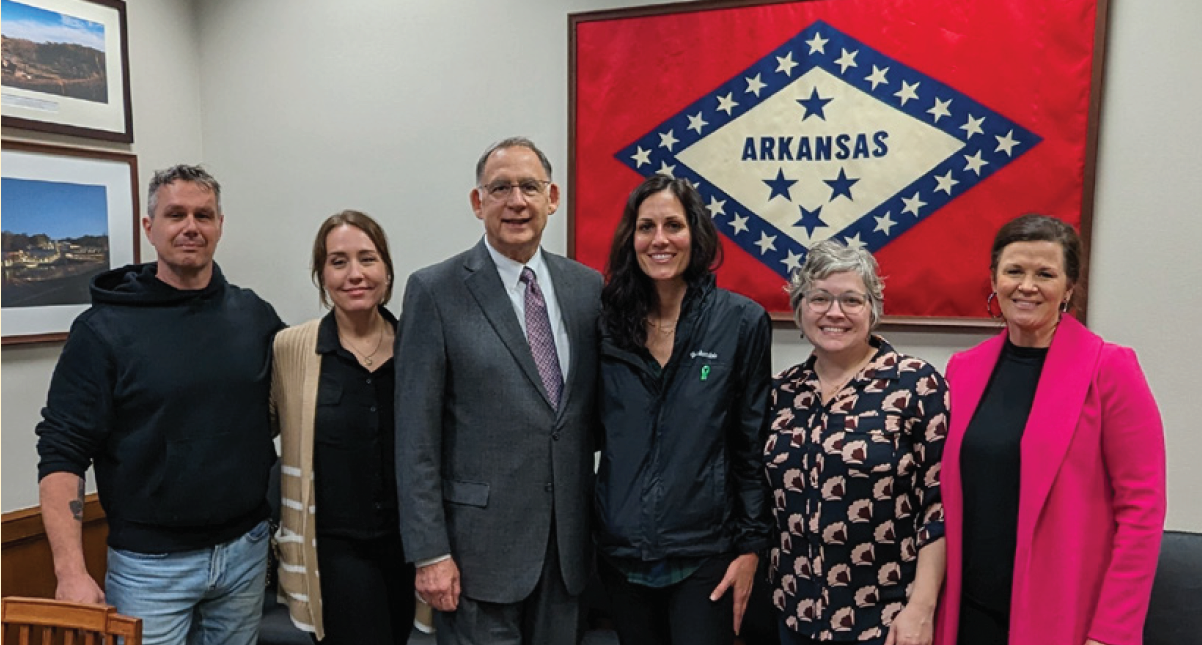Ask the Specialist: A Little Grace
By: Sheila Beck, MSPT, CBIST Clinical Operations Coordinator UAMS Brain Injury Program

Research shows that brain injury (BI) is a chronic disease process, not just a medical event. Increase of seizures, sleep disorders, and mental health issues associated with brain injuries, can lead to stress for the survivor, family members, and caregivers.
Below are 10 tips to help manage stress after a BI:
- Know Your Triggers: Keep a log of everyday activities that cause you stress so you can expect issues and develop solutions.
- Stay Active: Physical activity decreases stress.
- Sleep: Let your brain relax by reading a book before bed.
- Healthy Habits: Eat healthy. Avoid alcohol, caffeine, and smoking.
- Relax: Use meditation, music, or yoga to relax.
- Communicate: Share your feelings with friends, family members, or doctors to release some tension and lower stress levels.
- Make a List: Organize your time by making a list to decrease stress.
- Say “NO”: It is okay to say “I’m sorry but I cannot commit to this right now.”
- Time to Yourself: Make time for hobbies you enjoy.
- Give Yourself Grace: Be proud! You have achieved a lot!
Emily Perl Kingsley wrote an essay entitled, “Welcome to Holland.” Kingsley’s essay is about her child, who was born with Down Syndrome. Kingsley relates her experience to that of planning a vacation to Italy, only to find that you landed in Holland. It was not the trip you planned, but Holland is beautiful too. In many ways, having a brain injury is the same. It is not the life you expected, but it can be one you love. You just have to be willing to stop and look. Having a BI is like running a marathon, not a sprint. So, give yourself a little grace!
10 Top Tips for Coping with Stress after Brain Injury. (2023). Headway, the brain injury association. Retrieved: December 20, 2023. https://www.headway.org.uk/about- brain-injury/individuals/brain-injury-and-me/10-top- tips-for-coping-with-stress-after-brain-injury/:
Kingsley, Emily Perl. (1987). Welcome to Holland. Emily Perl Kingsley. Retrieved December 20, 2023. https://www. emilyperlkingsley.com/welcome-to-holland
Masel BE, DeWitt DS. Traumatic brain injury: a disease process, not an event. J Neurotrauma. 2010 Aug;27(8):1529-40. doi: 10.1089/neu.2010.1358. PMID: 20504161.
Want to suggest a topic? Email us at braininjury@uams.edu.
Survivor Story: David Thompson
As Told to Brandi Dawson

You might recognize David Thompson. He is somewhat of an internet celebrity. David is the content creator of the YouTube channel DeathProof Productions, where he offers tutorials on how to restore old Harley Davidson motorcycles. David is a certified Harley Davidson mechanic, welder, millwright, gunsmith, and survivor.
On September 8, 2014, David had a near fatal motorcycle accident on a paved road just 12 miles from his house. He had just left his friend’s house, a place he had visited numerous times before, when he lost control of his bike. David normally always wore his helmet, but this time he was not wearing it. David recalls that he “high sided” on his motorcycle. In other words, when he hit the gravel road, the rear wheel lost traction and regained it such that the momentum threw the bike into a flip, sending David over the handlebars.
When David first sat up at the crash, he felt the back of his head and found a lot of blood. As he tried to crawl to a nearby house, he passed out. Luckily, a family passing by saw his motorcycle headlights, found him, and called for help. Later, a doctor would tell David that he needed four pints of blood. When David asked, “Is that how much I lost?” the doctor remarked “You don’t have a dipstick. That is just how much it took to keep you alive.”
David was taken by helicopter to the hospital where he was in a coma for two weeks. He has vivid memories of dreams from his coma, which he describes as being “like real life, not fragmented.” He could hear everything going on around him and the conversations became part of his dreams. He described them as “just like living.”
Upon waking up, David found himself in restraints and was told he had been in a bad motorcycle accident and had a traumatic brain injury. The right side of his face was paralyzed, and he had a fracture that ran through his inner ear canal, leaving him deaf in his right ear. This part of his injury damaged his vestibular system, which is the part of the brain that controls balance, so he did not walk well. David also had an eye out of alignment and his head was caved in. A metal plate was surgically implanted to stabilize it.
David refers to the day he woke up as his “born-again day.” He told himself if he “could heal up good enough to ride motorcycles, he would be all right.” That day his doctor told him he was either “death-proof or the good Lord has a purpose for you.” This statement later inspired him to get an arm tattoo of a brain, motorcycle parts, and his newfound motto “death-proof.” The tattoo is on his throttle arm to always remind him to wear his helmet.
David was determined to get back to his job at the paper mill. He spent two weeks in inpatient rehabilitation and went to outpatient for nine months. After rehab, David suffered from “crippling fatigue” and trouble breathing that felt like “a magnet on his chest.” While David was recovering, he spent his time doing research to learn about the parts of his brain that were injured.
Due to his facial paralysis, David could not make tears, so he wore protective goggles to keep moisture in his eyes. He would soon learn from his doctor that he was dangerously close to becoming blind. This news caused him to struggle with overwhelming anxiety about being permanently blind. David recounts how he woke up every morning and saw a double red light, where there should only be one, on his television. Then one day when he woke up, he saw only one light. He knew then that his sight would be okay. This gave him the renewed hope he needed to continue persevering in his TBI recovery journey.
Just nine months after his accident, David went back to riding motorcycles. He still had light sensitivity and episodes of confusion, which he referred to as “trying to think through mud.” He made an appointment with a neurosurgeon, who confirmed that David had developed temporal lobe epilepsy. He worked with the doctors to find a medication that helped him with this issue.

After just over a year, David was able to return to his job at the paper mill, but soon discovered it was not the right decision. Due to his accident, if David sustained another head injury within a year, the doctor advised he would likely not survive it. Just a few weeks after he started back at the paper mill, he fell. He became worried he would hit his head if it happened again. So, he had to make a hard decision to leave his job at the paper mill and focus on his recovery and second round of rehabilitation due to the fall. It was then that David decided to shift his focus to repairing motorcycles.
Ten years after his injury, David still suffers from memory issues, but this does not stop him from wanting to give hope to others. He often wishes he had a chance to have met someone like himself that could have brought him hope during the earliest years of his injury. Instead, he dug deep, pushed forward, and became determined he would not let this beat him.
He has now decided to focus on how to bring this hope to other traumatic brain injury survivors. He has started telling his story to bring attention to the traumatic brain injury population.
In March of this year, David and his wife Dana traveled to Washington, D.C. for NASHIA’s 3rd Annual SEED Summit. There he attended the rally on Capitol Hill for Brain Injury Awareness Day. At that event, he and over 200 others from 38 states met with state representatives to advocate for the brain injury community.

With the help of David’s son and videographer, he continues to spread his message of hope through his YouTube channel. If you want to see more of David’s YouTube videos, visit his channel at https://www.youtube.com/@ DeathProofProductions. There, you can see him tell his brain injury story, watch footage from his trip to Washington, D.C., or even learn how to rebuild a Harley Davidson motorcycle.
David’s advice for others living with a brain injury:
- Rebuild yourself. Push yourself to rebuild your physical strength.
- Keep yourself busy and distracted. If you do not have any hobbies, find some.
- You do not go back to 100%. Put all the things on the table and count both the skills you lost and the ones you still have. Whatever your deficit is, find a replacement for it or a way around it. You might have to get creative! For example, David’s YouTube channel serves as both a place to share his love of building motorcycles and a memory tool to keep track of what steps he has completed in a project.
Want to share your story? Email us at braininjury@uams.edu.
Social Security Disability Pointers: Slam the Scam-How to Spot Government Imposters
By Tonya Cater, Social Security Public Affairs Specialist
Do you know how to spot a government imposter scam? Knowing how to identify potential scammers will help safeguard your personal information.
There are common elements to many scams. Scammers often take advantage of fears and threaten you with arrest or legal action. Scammers may also pretend to be Social Security or other government employees and claim there’s a problem with your Social Security number (SSN) or your benefits. They may even claim your SSN is linked to a crime.
When you suspect you have been contacted by a scammer:
- Hang up right away or ignore the message.
- Never provide personal information, money, or gift cards.
- Report the scam immediately to our Office of the Inspector General (OIG) at oig.ssa.gov/scam-awareness/report-the-scam.
If you owe money to Social Security, we will always mail you a letter with payment options and appeal information. We only accept payments electronically through pay.gov, online bill pay, or by check or money order.
We will never:
- Threaten you with arrest or legal action because you don’t agree to pay us money immediately.
- Promise a benefit increase in exchange for money.
- Ask you to send us gift cards, prepaid debit cards, wire transfers, internet currency, cryptocurrency, or cash through the U.S. mail.
Scammers continue to evolve and find new ways to steal your money and personal information. Please stay vigilant and help raise awareness about Social Security-related and other government imposter scams. For more information, please visit www.ssa.gov/scam.
Tell your friends and family about government imposter scams. Let them know they don’t have to be embarrassed to report if they shared personal financial information or suffered a financial loss. The important thing is to report the scam right away.
Together, we can “Slam the Scam!”
Please be aware that past newsletter issues may contain outdated information. For the latest updates on resources and events, visit our website or contact us at braininjury@uams.edu with any questions.
